This species takes one of the longest known migratory flights, traveling 9,300 miles from its breeding grounds in the Arctic to Tierra del Fuego at the southern tip of South America. In spring it depends on the availability of Horseshoe Crab eggs, moving northward up the Atlantic coast in step with the latter's egg-laying cycle which peaks every two weeks with each full and new moon.
I visited the http://report.bandedbirds.org/ website and discovered that this bird was first captured and banded in Avalon, New Jersey on November 11, 2005. In November of the next three years it was sighted on the New Jersey coast; in 2009 it appeared in Virginia in May, then back in New Jersey in August. There were no sightings in 2010, but multiple sightings were reported back in Avalon, New Jersey during November, 2011. The only sighting during 2012 was on a New Jersey beach.
Then it turned up on Tigertail Beach on February 27 of this year, lingering here for at least two weeks to refuel. (Click on photos for enlarged views)
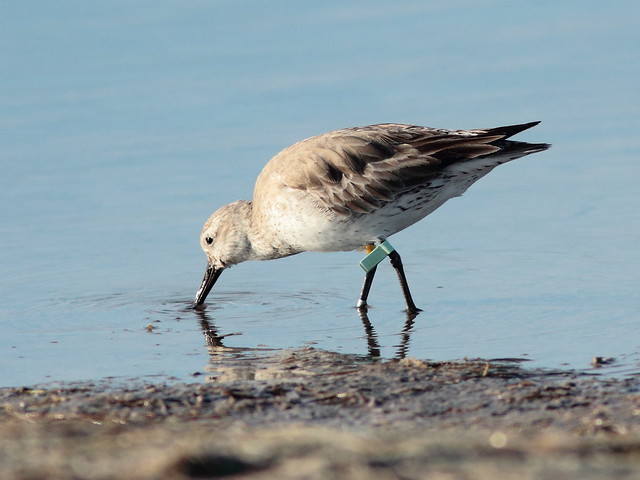
Tigertail was the nickname of Thlocklo Tustenuggee, a Florida Seminole Indian Chief who was honored as a "War Leader" during the Second Seminole Indian War. Tigertail was known for wearing a long belt cut from panther skin that trailed down from his waist like a tail. His name is found on several streets and neighborhoods up the Florida coast.
The knot was the first I have ever photographed, and I was rewarded with three more "first photos." Two were plovers. Several tiny Snowy Plovers ran along the shore like wind-up toys. Since they nest on beaches they are subject to disturbance and require protection during the breeding season.
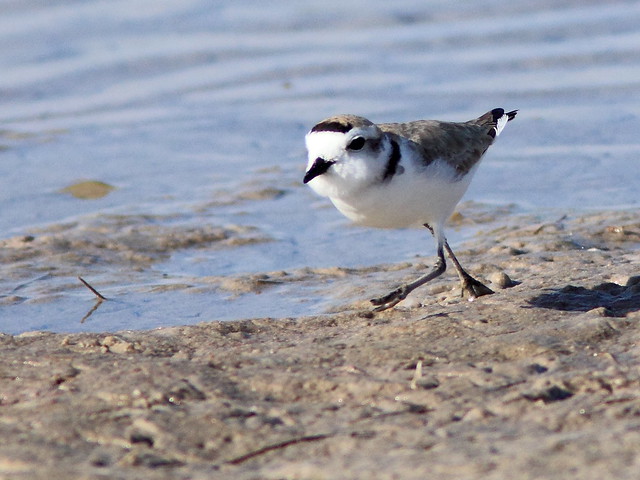
Wilson's Plover was another bird I had not yet photographed. This is an adult male. Note its large black bill and pale pinkish legs. They are half again larger than the Snowy Plover, weighing in at a little over 2 ounces.

The female Wilson's Plover is much paler in color.

The male Wilson's Plovers were singing loudly. Listen to this brief video clip. I had never before heard their song.
Similar in plumage but smaller, the 1.6 ounce Semipalmated Plover sports a shorter two-tone bill and brighter orange legs. It owes its name to the fact that its toes are only partially webbed.
 The Black-bellied Plover is our largest plover, weighing in at about a half pound (six times the weight of the tiny Snowy Plover).
The Black-bellied Plover is our largest plover, weighing in at about a half pound (six times the weight of the tiny Snowy Plover). 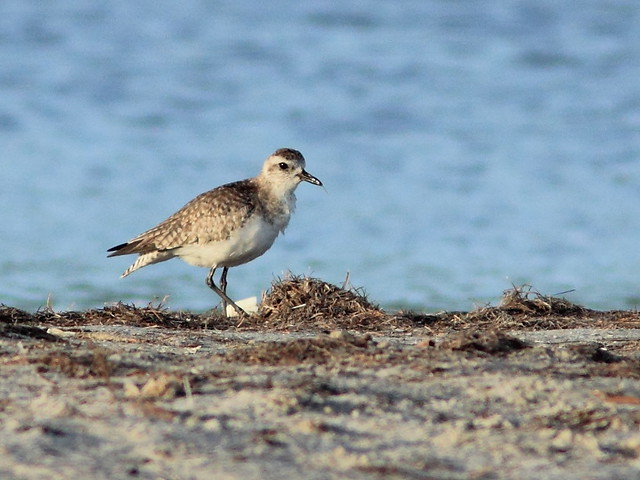 I We also saw Killdeer, making it a five-plover day. Other shorebirds included the Ruddy Turnstone...
I We also saw Killdeer, making it a five-plover day. Other shorebirds included the Ruddy Turnstone... 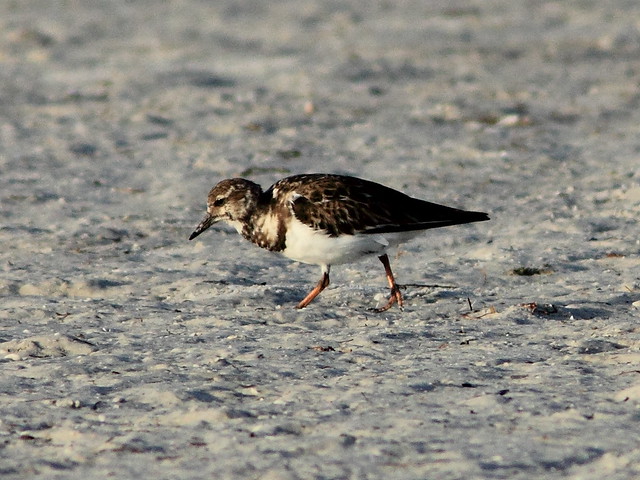 ...numerous Dunlins...
...numerous Dunlins... 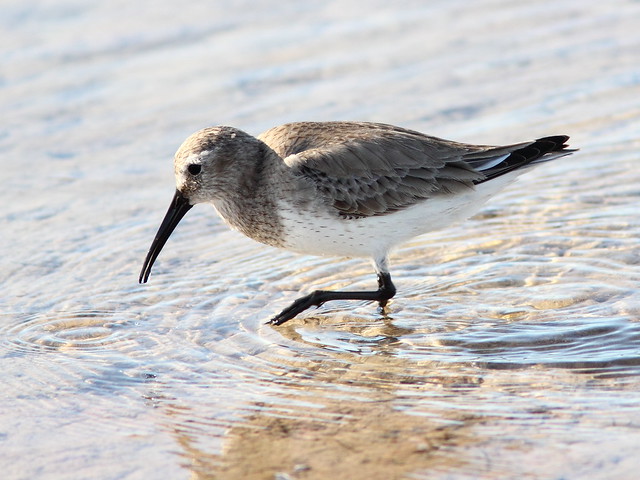 ...Sanderlings...
...Sanderlings...
 ...a Willet...
...a Willet...  ...Least Sandpipers, with tell-tale yellow legs...
...Least Sandpipers, with tell-tale yellow legs...  ...and two Short-billed Dowitchers that probed the mud in sewing-machine fashion, gobbling up the Horseshoe Crab eggs.
...and two Short-billed Dowitchers that probed the mud in sewing-machine fashion, gobbling up the Horseshoe Crab eggs. 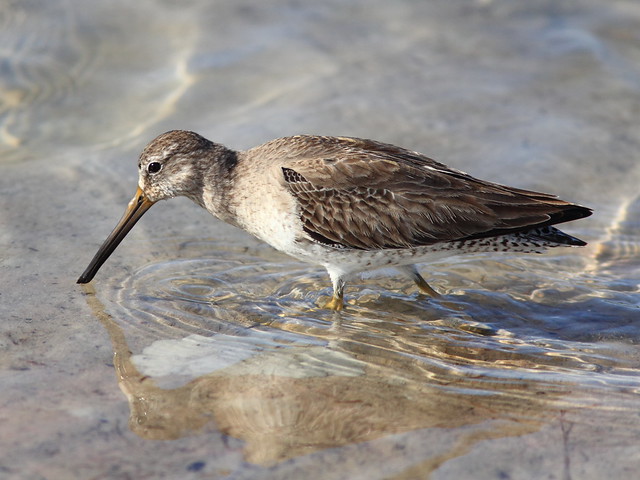 An Osprey nest at the edge of the dunes contained some clothing and an unusual fishing accessory.
An Osprey nest at the edge of the dunes contained some clothing and an unusual fishing accessory. 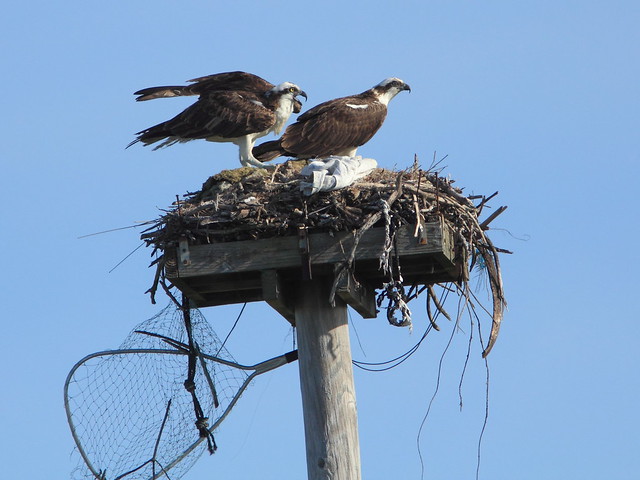 White Ibises competed for crab eggs at the water's edge.
White Ibises competed for crab eggs at the water's edge. 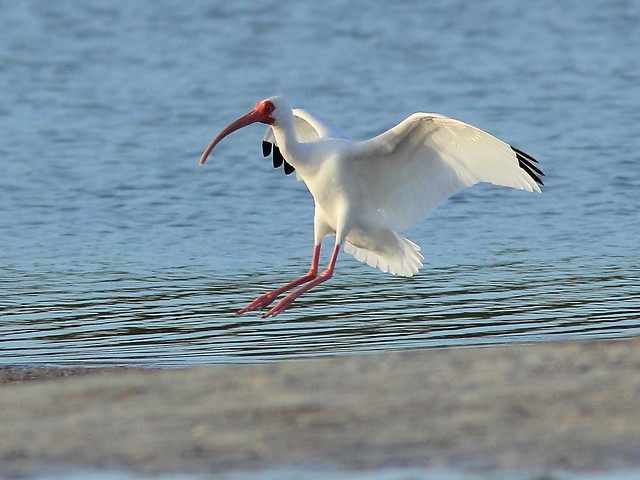 Brown Pelicans dove for fish offshore.
Brown Pelicans dove for fish offshore. 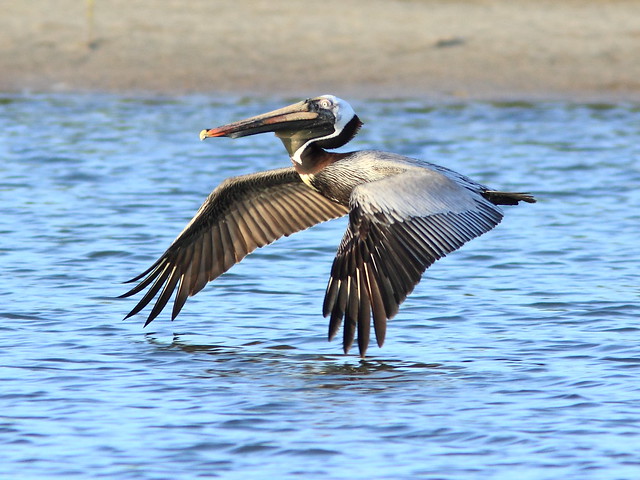 Just outside the entrance to the beach, Burrowing Owls nested in vacant lots. They were provided with low T-shaped roosts and orange tape was placed around their homes to discourage close approach.
Just outside the entrance to the beach, Burrowing Owls nested in vacant lots. They were provided with low T-shaped roosts and orange tape was placed around their homes to discourage close approach. 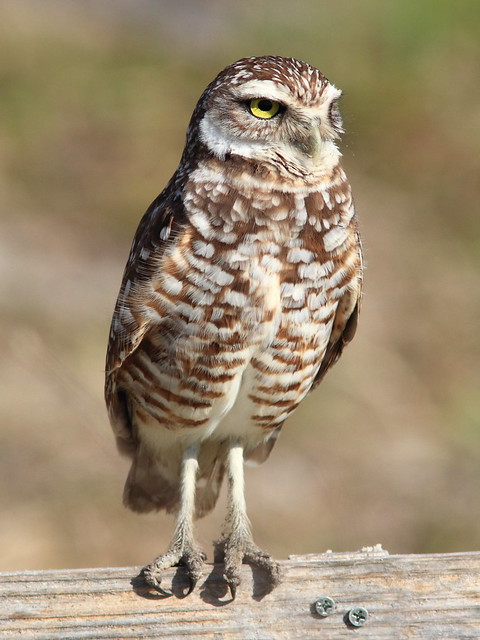
This one struck an interesting pose..

Ken, awesome series. I love all of the cute Plovers. And I love the burrowing owls. Wonderful photos!
ReplyDeleteSome brilliant shots there today Ken, together with some good ID tips on the plovers. The Osprey nest is both amazing and a little worrying at the same time if the birds themselves are responsible for bringing in all that rubbish. The Burrowing Owl looks so much like our Little Owl except for the long legs of the burrowing. All the better to dig with?
ReplyDeleteawesome bunch of shorebirds. the plovers are so sweet with their large eye. love the owls, too.
ReplyDeleteMarvelous photos of all these shorebirds and yes the owls. Thanks for sharing them.
ReplyDeleteGreat shots of all these birds, owls are really cute birds.
ReplyDeleteWonderful group of shorebirds! The Burrowing Owls are so cute.
ReplyDeleteVery nice Ken. Glad you made it over to Tigertail. I birded that place many many times when I lived in Naples. Great place to see shorebirds "up close and personal." -- Vince
ReplyDeleteIncredible!!! Your post and fantastic photos has left me speechless!!
ReplyDeleteBeautiful series of shots!
ReplyDeleteA great serie of photos, well done!
ReplyDeleteReally nice bird images, especially the ibis in mid-air and the owls. Visiting from IRBB. :)
ReplyDeleteYou got some super images of the shore birds as well as the wonderful Owl set...
ReplyDeleteA great series of photos of all the shorebirds. A few come down this way also but most do not. Wish I could see them all!
ReplyDeletefabulous photographic moments; enjoyed each of these, and the short video to hear the call too
ReplyDeleteKen, what a nice series! Good job on the Red Knot! I have yet to see one. Terrific history from its band.
ReplyDeleteTell the Ospreys I want my landing net back! LOL!
I hope we can find Burrowing Owls locally this year. They seem to have really declined.
Fantastic series Ken! Thank you...I could just about bookmark this post and use it as Florida shorebird ID. thank you -- a wonderful birding day for you guys on Marco!
ReplyDeleteGreat image series showing. Thanks for the comment on my blog. Wishing you and your a happy Easter :) Hanne Bente
ReplyDeleteGreat set of pictures.
ReplyDeleteI'm involved in group that bands and flag waders around Melbourne. Many of the gannets are banded and given individualised 'scope readable bands as well.
I'd like to have a go at banding these birds.
Cheers and thanks for linking to WBW - Stewart M - Melbourne
Wow..... fantastic post. Some super images of brilliant birds. The details on some of the Plovers is top class
ReplyDeleteWhat a beautiful series of birds, shore and all! And I have to say that Burrowing Owl captured my heart - very partial to owls :) All just gorgeous "bird eye candy" - thank you for sharing!
ReplyDelete